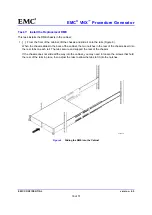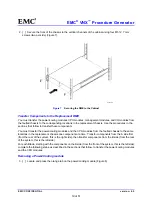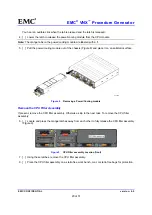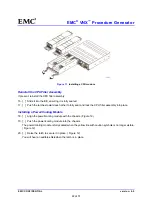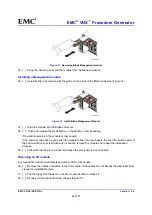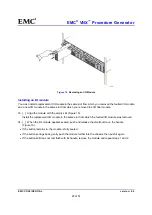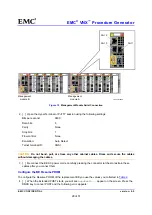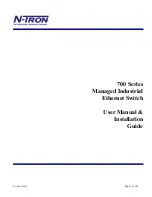
EMC
®
VNX
™
Procedure Generator
EMC CONFIDENTIAL
version: 4.5
14 of 51
slot = 2
member_of =
standbyfor= server_2
status :
defined = out_of_service
actual = online, ready
id = 2
name = server_2
acl = 0
type = nas
slot = 3
member_of =
standby = server_2.faulted.server_3, policy=manual
status :
defined = enabled
actual = online, ready
Refer to Table 3 for command reference information.
Table 3
nas_server output definitions
Value
Definition
id
ID of the Blade.
name
Name given to the Blade.
acl
Access control level value assigned to the Blade or VDM.
type
Type assigned to the Blade. (nas=primary; standby=standby)
slot
Physical slot in the system where the Blade resides.
member_of
Group to which the Blade is a member.
standby
If the Blade has a local standby associated with it.
standbyfor
If the Blade has a local standby, lists associated primary.
status
Whether the Blade is enabled or disabled, and whether it is active.
2. [ ] Go to Step 4 if the system is configured with only one Blade enclosure, otherwise continue.
3. [ ] For a multi-Blade enclosure system, prepare each Blade in the faulted BE for removal. Repeat this
step for each Blade in the faulted enclosure before continuing to the next step.
a. If the Blade is a primary Blade and has no standby Blade configured, no action is required.
b. If the Blade is a primary Blade that has a standby Blade configured in another BE, failover to that
standby Blade:
#
/nas/bin/server_standby <server_name> -activate mover
Where
<server_name>
is the name of the server. Use the
nas_server –list
command to get
the server name.
c. If the Blade is configured as a standby Blade and is currently standing in for an available primary Blade
contained in another BE, enter the following command:
#
/nas/bin/server_standby <server_name> -restore mover
where
<server_name>
is the name of the server. Use the
nas_server –list
command to get
the server name.
Example:


















